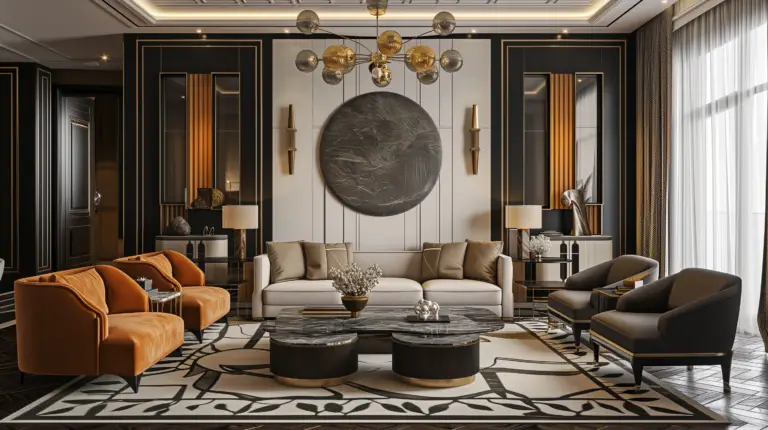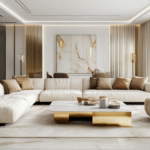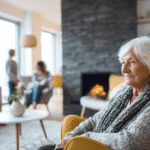Free Shipping On All Orders
15 Moroccan Interior Design Ideas 2024 You Will Love

Moroccan interior design has been gaining popularity worldwide due to its unique blend of cultural influences, bold patterns, and vibrant colors. Originating from the North African country of Morocco, this design style combines elements from Mediterranean, African, and even Middle Eastern cultures, creating an eye-catching and eclectic aesthetic. With its distinctive use of patterns, textures, and materials, Moroccan-inspired homes are warm, inviting, and undeniably stylish.
Key elements of Moroccan design include intricate architectural details, ornate tiles, and handcrafted furnishings that showcase the exceptional craftsmanship of local artisans. Rich colors, such as deep blues, fiery reds, and earthy tones, are often used to create a warm and cozy atmosphere. Additionally, the strategic use of lighting, textiles, and accessories further enhances the exotic charm of Moroccan-inspired spaces, elevating them to a level of elegance that is hard to match in other design styles.
Key Takeaways
- Moroccan interior design blends cultural influences and bold patterns for a unique aesthetic.
- Key elements include intricate architectural details, ornate tiles, and handcrafted furnishings.
- Rich colors, strategic lighting, and opulent textiles create warm and inviting Moroccan-inspired spaces.
History and Origins of Moroccan Interior Design
Moroccan interior design finds its roots in the rich and diverse history of Morocco, a North African country with coastal borders on both the Mediterranean Sea and the Atlantic Ocean. Its vibrant culture, influenced by various factors, showcases a unique blend of architectural techniques and styles that have evolved over centuries.
One of the earliest contributors to Moroccan design is the Berbers, the indigenous people of Morocco, who have lived there for over 4,000 years. This nomadic community has had a significant impact on the design elements and inspired the use of natural, locally available materials such as wood, clay, and vibrant textiles.
A pivotal influence on Moroccan architecture and design was the rise of the Moorish civilization, which had spread across Western Islamic culture. Moorish architecture consists of a mix of Islamic and European elements that shaped the development of the Moroccan style. The Moors were renowned for their advanced plasterworking techniques and geometric patterns that are still prevalent in Moroccan interior design.
Throughout its history, Morocco has been a crossroads of various cultures, such as Arabs, Europeans, and Indigenous populations. Each group has contributed to the unique mix of design elements that define Moroccan interior design today. The incorporation of intricate ogee shapes, for example, stems from their presence in Gothic architecture, eventually making their way into Moroccan design.
Moroccan interior design’s rich history pulls from various influences, ranging from the indigenous Berber culture to Moorish architecture and distinctive European elements. These myriad influences have combined to create a unique, vibrant, and mesmerizing design style synonymous with the North African country of Morocco.
Key Elements of Moroccan Interior Design
Colors and Patterns
Moroccan interior design is known for its vibrant and bold colors, such as fuchsia, royal blue, deep purple, and vibrant red. These bright hues are balanced with soothing neutral shades inspired by the desert, like sand, taupe, beige, and whites. For example, Benjamin Moore offers Moroccan Red 1309 and Moroccan Spice AF-285 paint colors.
Apart from its intense color palette, Moroccan design is also characterized by intricate patterns. Geometric motifs, floral designs, and traditional Islamic art patterns are prevalent throughout the style. These patterns can be found in various furnishings, textiles, rugs, and tilework, creating a rich and visually appealing atmosphere.
Textures and Materials
In Moroccan interior design, an emphasis is placed on the use of tactile materials. Luxurious textiles, like silk and velvet, are commonly used in pillows, cushions, and throws, while traditional Moroccan rugs, such as Beni Ourain or Kilim rugs, provide plush comfort underfoot.
The use of carved wood, metalwork, and ceramics is also prominent in Moroccan design. Intricately carved wooden doors and furniture showcase expert craftsmanship, and ornamental brass or silver lanterns and mirrors add a touch of opulence. Ceramic tiles with detailed patterns, known as zellige tiles, are often used to create vibrant, eye-catching surfaces in kitchens, bathrooms, or outdoor spaces.
Mixing and layering these textures and materials ultimately results in a sophisticated, plush, and visually stunning Moroccan-inspired space. Morrocan interior design, when executed carefully and thoughtfully, transports its inhabitants to a world of comfort, luxury, and enchantment.
Furniture and Decor
Moroccan interior design features a unique blend of patterns, colors, and textures that make it an alluring option for home decor enthusiasts. One major element of this design style is the use of tiles. Moroccan tiles, also known as Zellige, are an important part of the country’s architectural history and feature intricate geometric patterns in bright colors. These tiles can be used for floors, walls, or even incorporated into furniture designs.
Furniture in Moroccan decor is characterized by its elaborate details and craftsmanship. Common materials include carved wood, wrought iron, and mother of pearl inlay. The pieces are designed to be inviting, with tables and seating typically set low to the ground. One might find carved seat bases, chests, and coffee tables contrasting with plush couches, poufs, or floor cushions in a Moroccan-inspired room.
Rugs play a significant role in bringing together Moroccan interiors. With their bold colors and intricate patterns, these rugs provide a warm, cozy feel and help unify the other design elements in a room. Traditional Moroccan rugs include Beni Ourain, Kilim, and Boucherouite, each with their unique patterns, textures, and colors.
Lanterns serve as a focal point in Moroccan decor, offering not only illumination but also an exquisite decorative element. Moroccan lanterns are typically made of brass or metal and feature intricate cut-out designs, casting patterned shadows onto the surrounding walls when lit. These lanterns can be hung from the ceiling, placed on a table, or used as floor lamps, depending on the desired ambiance.
In addition to tiles, furniture, rugs, and lanterns, other decor elements such as pillows, wall hangings, and mirrors play an essential role in Moroccan interior design. Incorporating these pieces helps create a diverse and layered aesthetic. For example, one can use leather poufs or embroidered cushions in bold colors to enhance the look and feel of a room.
Moroccan-Inspired Lighting
Moroccan-inspired lighting is an essential element in creating a captivating and authentic Moroccan interior design. These unique lighting fixtures showcase the skilled craftsmanship and creative designs rooted in North African culture, adding warmth and ambiance to your living space.
One of the most popular Moroccan lighting options is the lantern. Moroccan lanterns are typically made from metals like copper and brass, with intricate patterns and cut-out designs that cast a soft, patterned glow when illuminated. They come in various shapes and sizes, and can be hung from the ceiling, placed on a table, or used as floor decorations, giving you the flexibility to incorporate them into any room. Some lanterns also feature colored glass, which adds another layer of depth and color to the emitted light.
In addition to lanterns, Moroccan-inspired lighting also includes decorative wall sconces and chandeliers, often made from the same metals and featuring similarly intricate patterns. These fixtures can transform a room with their stunning designs and soft, glowing light.
Color plays a significant role in Moroccan interior design, and this extends to lighting as well. Shades of blue, in particular, are often used to create a tranquil and mystical atmosphere, as seen in the famous Blue City of Chefchaouen. Incorporating blue-tinted glass in your Moroccan lanterns further enhances their impact and gives a nod to this traditional color palette.
Fabrics and Textiles
Moroccan interior design greatly emphasizes the use of fabrics and textiles to create a warm and inviting atmosphere. These materials play a crucial role in adding depth, texture, and vibrant colors to spaces. To achieve an authentic Moroccan look, consider incorporating some or all of the following elements in your design:
When it comes to cushions and throw pillows, Moroccan style is all about abundance. Choose a variety of shapes, sizes, and patterns to create a cozy and comfortable environment. You can mix and match different textiles like silk, chenille, and woven materials to add visual interest.
Curtains in Moroccan interiors are often made from luxurious and soft fabrics, such as silk or velvet. They can be draped on furniture or used to divide rooms and frame windows, providing both privacy and an added layer of texture to the space.
Using textiles on your floors is another way to blend Moroccan design into your home. Rugs made from materials like wool or cotton can be used to achieve a sense of warmth and comfort. Opt for colorful and patterned rugs to enhance the exotic vibe of your room.
In Moroccan design, upholstery often features a mix of patterns, colors, and textures. Choose vibrant colors like red, blue, or yellow for your upholstered furniture. Complement this with intricate patterns and embroidery for an authentic Moroccan feel.
Silk is a popular fabric in Moroccan interior design, perfect for creating an opulent and luxurious ambiance. Use silk fabrics for decorative pillows, curtains, and even wall hangings to bring an air of sophistication to your space.
Art and Accessories
Moroccan interior design is known for its rich colors, intricate patterns, and variety of art pieces and accessories. One of the essential elements of this design style is the use of mirrors. Moroccan mirrors are often framed with ornate handcrafted details, sometimes featuring metal or wood carvings. These mirrors not only serve as decorative pieces, but also help to reflect light and create a sense of space in a room.
Vases are another popular accessory in Moroccan design. Typically made from ceramic or terracotta, these vases can be painted in vibrant colors or adorned with intricate patterns. They not only hold flowers or plants, but can also serve as standalone decorative items.
Hand-crafted items play a significant role in Moroccan interior design, showcasing the country’s rich cultural heritage and skilled craftsmanship. Textile items such as embroidered cushions, Berber rugs, and decorative throws add warmth and texture to a space while incorporating traditional Moroccan patterns.
Mosaic tile is a key element of Moroccan design and can be found in various forms, such as wall art, tabletops, and flooring. These tiles are typically made from terracotta, clay, or ceramic materials and are hand-painted with geometric patterns or floral motifs, creating a striking and colorful focal point in a room.
Baskets are another versatile accessory in Moroccan interiors. Handwoven from natural materials like palm leaves, these baskets come in various sizes and styles, often featuring intricate patterns or designs. They can be used for storage, as plant holders, or even as a decorative wall piece.
Designing Moroccan Spaces
Moroccan interior design is known for its exotic, dramatic, luxurious, and opulent style, which focuses on colors, patterns, and fabrics to create stunning spaces. To design a Moroccan-inspired living room, bedroom, dining room, or any other space in your home, consider the following key elements.
Firstly, the use of strong and vibrant colors plays a significant role in Moroccan design. Rich jewel tones such as blues, greens, reds, and golds can be incorporated through wall and floor colors, textiles, and decorative accessories. You can also mix and match these colors in patterns to produce a visually captivating space.
The characteristic horseshoe arches are a significant element to consider, which can be integrated through doorways, windows, or even as decorative indentations on walls. These arches, also known as Moorish or keyhole arches, bring a sense of authenticity and elegance to the design.
In a Moroccan living room, low-level seating like cushions, poufs, and floor sofas are essential. Layer these elements with textured and colorful fabrics to create a warm and inviting atmosphere. For dining rooms, using low tables paired with floor cushions can evoke the traditional Moroccan dining experience.
In bedrooms, opt for sumptuous bedding with intricate patterns and layers of fabric, including curtains, throw pillows, and blankets. Consider a canopy bed with a richly embroidered fabric draped over the top to create a sense of luxury and privacy.
Textures and patterns play a vital role in Moroccan interiors, so incorporate them using rugs, decorative pillows, and upholstery. Traditional Moroccan motifs, such as geometric designs, can be blended with more contemporary patterns for a balanced look.
Luxurious Moroccan Bedrooms
Elegant and Comfortable

Moroccan bedrooms are known for their elegance and comfort, providing a luxurious atmosphere that invites relaxation and tranquility. One of the key elements in creating this elegant ambiance is the use of ornate furnishings, such as intricately carved headboards and side tables. Additionally, floor cushions and plush bedding are essential for achieving that cozy, inviting feel.
Incorporating vibrant colors is a staple in Moroccan interior design, but for a more elegant and comfortable approach, consider using soft, neutral tones like cream, beige, or light blue. These colors, combined with the intricate details of the decor, evoke a sense of sophistication and serenity. To enhance this look further, consider adding some Zellige tilework as a decorative element.
Dramatic and Bold
For those who prefer a more dramatic and bold approach to their Moroccan bedroom, the key lies in the use of striking colors and patterns. Choosing hues like fuchsia, purple, turquoise, green, red, or marigold can create a vibrant, lively atmosphere that is still luxurious.
In addition to color, incorporating elements such as rich textured fabrics, bold geometric patterns, and metallic accents can bring an opulent feel to the space. Floor cushions, in particular, can serve as both functional seating and a decorative statement when they showcase striking patterns and textures.
To complete the look, don’t be afraid to add a few dramatic statement pieces to your bedroom, such as large hanging lanterns, ornately decorated mirrors, or even a canopy bed. These elements will help to create an eye-catching Moroccan-inspired space that is not only luxurious but also infused with personality and character.
Moroccan Living and Dining Rooms
Moroccan interior design is known for its vibrant colors, intricate patterns, and luxurious textures. Incorporating these elements into your living and dining rooms will create a unique and inviting space. In this section, we will discuss key aspects of Moroccan design such as flooring, low seating, tables, and side tables.
Flooring is an important aspect of a Moroccan-inspired living or dining room. Ceramic tiles are often used for floor coverings, offering a coolness that is welcomed in hot weather. These tiles are typically adorned with bold geometric patterns. To add warmth to the space, you can also incorporate plush Boucherouite or Beni Ourain carpets and stacked floor cushions.
In Moroccan culture, low seating is frequently used to promote relaxation and intimacy. Incorporate this concept into your living room with cushioned benches and low sofas, adorned with colorful textiles and throw pillows. This comfortable seating arrangement encourages guests to unwind and engage in conversation.
Tables play a central role in Moroccan dining rooms, as they often serve as the focal point. Opt for a simple and yet elegant design, with carved wooden legs and a smooth surface. The furnishings should be functional, but also showcase the beauty of the Moroccan design. Do not hesitate to pair your table with a show-stopping rug or beautiful wall treatment.
Side tables in Moroccan living rooms are not only functional but also serve as decorative elements. Choose pieces featuring intricate carvings, metalwork, or vibrant and detailed tilework for an authentic look. These versatile pieces can be used for placing lamps, displaying artwork, or for holding food and beverages during gatherings.
My Thoughts

The picture above perfectly shows , how I would design a Moroccan style home. I really like the arches and the patterns of the rugs and cushions. I’m not the biggest fan of all these bold colors and the mosaic tiles. Elegance and decent designs fitting me better. For the Moroccan Style it means, that i would incorporate the arches, handcrafted wood furniture and silk or velvet cushions in neutral colors.
When you decide to design your home in a specific interior design style, you should always choose the elements of that style, that fit you. If you like colorful mosaic tiles, use them. If you don’t like arches, don’t use them. It’s that easy.
As I have described, just because there is a scheme for a specific interior design style, it doesn’t mean that you have to follow that. Feel always free to interpret it in your way.
Frequently Asked Questions
What are the characteristics of Moroccan interior design?
Moroccan interior design is characterized by vibrant colors, intricate patterns, and ornate details. It is inspired by the culture, history, and landscape of Morocco, and incorporates elements from Arab, Persian, European, and Sub-Saharan African cultures.
What are some common decorative components of Moroccan interior design?
Moroccan interior design often includes metal trays, dishes, and vases with intricate ornamentation, as well as Moroccan mosaics used for floors, walls, and countertops. Other decorative elements
may include textiles, such as rugs and pillows, and carved wood furniture.
How can I incorporate Moroccan interior design into my home?
To incorporate Moroccan interior design into your home, you can incorporate vibrant colors and patterns through textiles, such as rugs, pillows, and curtains. You can also incorporate ornate details through metalwork, woodwork, and mosaics. Finally, you can create a cozy and inviting atmosphere by incorporating comfortable seating areas and soft lighting.
If you liked this post about Moroccan interior design, don’t forget to follow us on Pinterest so you don’t miss any more interior design news!








